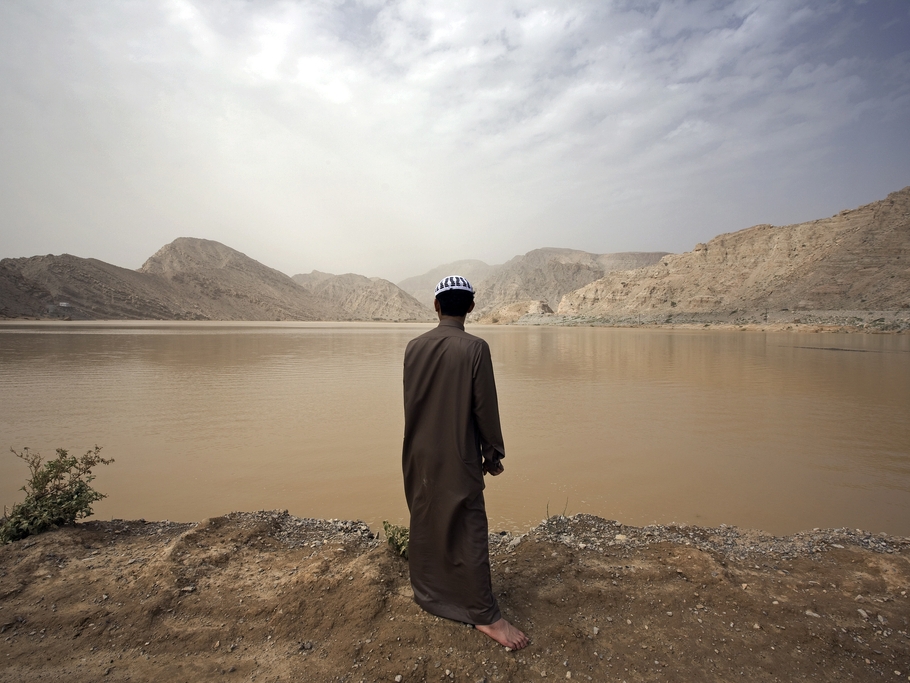
Brahma Chellaney, The National
The global shock brought about by the Covid-19 pandemic, with its major economic and social disruptions, has ensured that 2020 will go down in history as a watershed year. Researchers believe that the impact of the pandemic has set in motion higher rates of birth, divorce, obesity, depression, bankruptcy, unemployment and domestic violence, among other things.
But one key implication of the pandemic has received little attention: increasing demand for safe water. Freshwater is not just the basis of cleanliness; it is an indispensable weapon in combating Covid-19 or any other disease.
More fundamentally, water is essential for economic growth and social stability. However, it has already become the world’s most exploited natural resource. Even before the pandemic flared, our water crisis was becoming more acute.
According to the British scientific journal Nature, about 53 per cent of the people across the globe go without safe sanitation services of any kind. The UN reports that about 40 per cent of global households lack access to basic handwashing facilities, while 28 per cent of the world’s population even lacks access to even safe drinking water.
Most striking is how unevenly and unequally water resources are distributed across the world. Some countries, notably Canada and Russia, are endowed with copious water resources. The poorest states in water resources, by contrast, are largely located in Middle East and North Africa. Natural water availability in these countries is just a fraction of 1 per cent of the per capita resources in, say, water-rich Brazil.
Water scarcity, already affecting two-thirds of the global population, is set is grow due to several factors. These include over-exploitation of the resources of rivers, aquifers and lakes; rising demands of economic development; changing diets, especially the increasing intake of meat, whose production is notoriously water-intensive; and global warming.
National paucity of water resources is driving some countries or companies to produce food for their home markets on overseas farmland, especially in sub-Saharan Africa.
Meanwhile, the critical importance of water, coupled with its growing shortages, has resulted in grating “hydropolitics” in transnational basins.
Riparian neighbours are increasingly competing to appropriate resources of shared rivers and aquifers by building hydro-engineering structures, which are exacerbating the environmental impact. Not surprisingly, distrust and discord have begun to roil relations between upstream and downstream states.
In fact, just like arms racing, “dam racing” has emerged as a geopolitical concern in several river basins. In Asia, the Middle East and North Africa, water has become the most contested resource.
A report reflecting the joint judgment of US intelligence agencies warned in 2012 that the use of water as a weapon or a tool of terrorism will become more likely in some regions, with some countries using shared water resources to exert leverage over their neighbours and to secure regional influence. Since then, the water situation has become more dire and the hydropolitics murkier.
Another trend is the increasing commodification of water, as reflected in the dramatic rise of the bottled-water industry. The bottled-water industry’s rise over the past two decades has had two global implications.
First, bottled water has become a major source of plastic waste. And second, bottled mineral water is already more precious than crude oil. The current international spot price of crude oil is lower than the retail price of any mineral water in a convenience store or supermarket.
Yet more and more people are relying on bottled water even in cities in the developed world where tap water is safe and highly regulated.
Water remains the world’s most underrated and under-appreciated resource. The pandemic, though, may have helped raise global awareness about the centrality of water in our lives. But the pandemic has also underlined the challenge: how to meet the increasing demand for water?
One pathway is to use new clean-water technologies to tap non-traditional supply sources, such as seawater, brackish water, recycled wastewater, and atmospheric water. Scientific advancements have substantially improved the energy-water ratio of such technologies, thus increasing the commercial feasibility and attraction of utilising new supply sources.
These sources of supply, however, still remain more expensive than conventional water.
It has also become imperative to achieve greater water-use efficiency and productivity, including controlling wasteful practices. Because agriculture uses about 70 per cent of the world’s water supply, the greatest potential for easing the water crisis is through practices that cut the amount of water used in food and livestock production.
The sharpening hydropolitics, meanwhile, represents a formidable challenge. It has turned shared water resources into an engine of power struggles, with some upstream countries such as China and Turkey criticised for seeking to weaponise this most essential of natural resources.
There is no alternative to rules-based co-operation on shared water resources. Transparency on national projects, collaboration between co-riparian states on trans-boundary aquifers, rivers and lakes, sharing arrangements, and dispute-settlement mechanisms are the building blocks of water peace.
Brahma Chellaney is a geostrategist and the author of nine books, including Water: Asia’s New Battleground.

You must be logged in to post a comment.